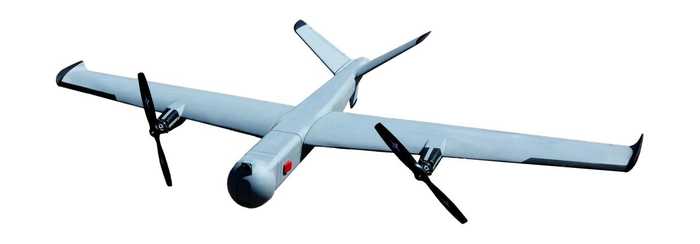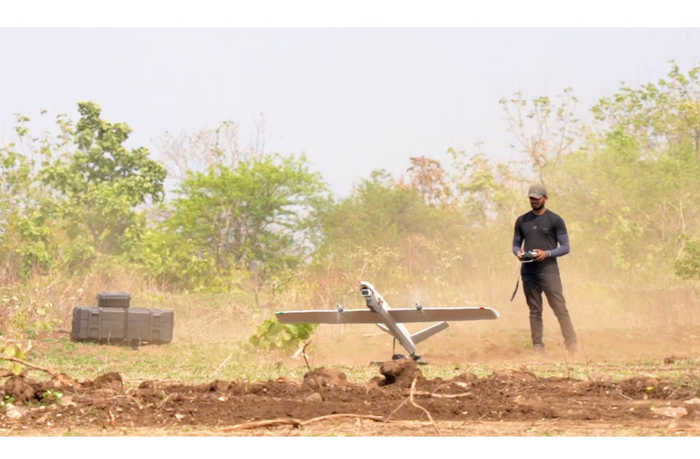Published 18:25 IST, December 3rd 2024
Indian Army Receives 480 Indigenous Nagastra-1 Loitering Munitions, Strengthening UAV Capabilities
Nagastra's electric propulsion ensures a low acoustic signature, making it ideal for covert operations.
- Defence
- 3 min read
New Delhi, India - In a landmark achievement for India’s defence sector, the Indian Army has received a consignment of 480 loitering munitions, developed by Solar Industries in Nagpur. The indigenous Nagastra-1, which boasts over 75% indigenous content, marks a significant step towards enhancing India's military capabilities in drone warfare. This delivery follows a contract signed under emergency procurement powers by the Indian Army, further showcasing the country's growing defence self-reliance.
The Nagastra-1 is a man-portable, fixed-wing, electric UAV weighing 9 kg. It offers a range of 15 km in man-in-loop control mode and extends up to 30 km in autonomous mode. With an endurance of 30 minutes, the UAV is capable of performing a wide range of tasks, including surveillance and precision strikes. Its electric propulsion system ensures a low acoustic signature, allowing it to operate undetected at altitudes above 200 meters, making it a highly effective tool in modern combat scenarios.
Key Features of Nagastra-1
Equipped with both day and night surveillance cameras, the Nagastra-1 carries a 1 kg high-explosive fragmenting warhead. This makes it capable of neutralizing soft-skin targets with precision. One of the standout features of the Nagastra-1 is its unique parachute recovery mechanism, allowing for the system to be aborted, recovered, and reused—something that sets it apart from similar loitering munitions available globally.

The Nagastra-1 represents a major leap in India's efforts to develop Indigenous defence systems. Designed and developed by Solar Industries in collaboration with Z-Motion Autonomous Systems Pvt Ltd, Bengaluru, the loitering munition contains more than 75% indigenous content. The UAV is man-portable and lightweight, with a combined weight of 30 kg split across two rucksacks, including a ground control station, communication control, payload, and pneumatic launcher.
This indigenous system is designed to enhance the precision strike capabilities of Indian Army troops. Its lightweight and portability allow it to be easily deployed in tactical operations, offering a significant force multiplier in the field.
Drone Tech’s Worth in Modern Conflicts
The successful development of Nagastra-1 aligns with India’s strategic push for self-reliance in defence technology. The Indian defence sector has seen an increase in drone-related incidents along its northern borders, which underlines the necessity for indigenously developed UAV solutions. The Nagastra-1 follows in the footsteps of other countries, such as Armenia, Azerbaijan, and Ukraine, where drone technology has proven its worth in modern conflicts.
The importance of drones in military operations has been recognized worldwide, and Solar Industries’ achievement with Nagastra-1 is a critical milestone in India’s drive to boost its drone capabilities. As most industries in India lack expertise in weaponized drones, the successful development of Nagastra-1 opens new doors for India to expand its indigenous drone technology, reducing reliance on foreign suppliers.
The Future of Indigenous UAVs
Solar Industries is already working on advanced versions of the Nagastra loitering munition, including Nagastra-2 and Nagastra-3, which will feature extended performance and enhanced warhead-carrying capabilities. The company is also engaged in the development of a Medium Altitude Long Endurance (MALE) drone under the Ministry of Defence’s Indigenously Designed, Developed and Manufactured (IDDM) category.

In parallel, several other Indian firms are moving towards developing Indigenous MALE drones, marking a shift in India's defence approach. The Indian armed forces are looking to acquire 97 MALE drones, which will significantly bolster surveillance and reconnaissance capabilities. This aligns with the goal of building an indigenous drone industry capable of producing high-performance UAVs at lower costs.
With these advancements, India is positioning itself to be a global leader in the field of autonomous weaponized systems, demonstrating the country's growing self-reliance in defence technology and strengthening its strategic capabilities on the global stage.
Updated 19:30 IST, December 3rd 2024